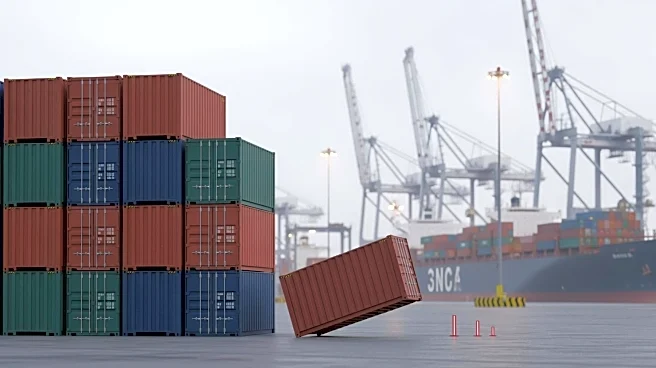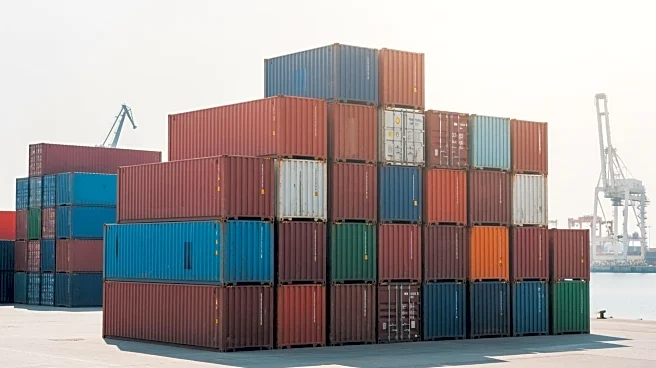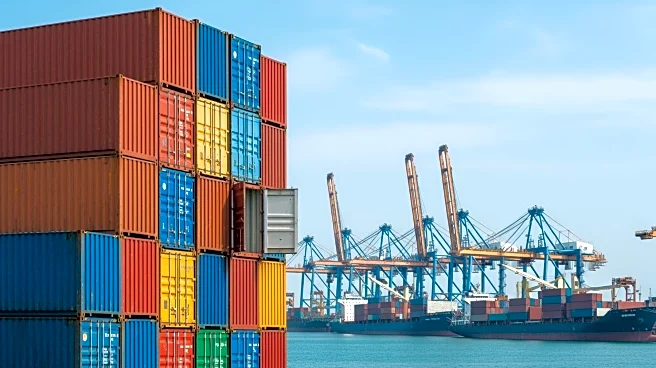What's Happening?
S&P Global Market Intelligence has reported a 5.8% annual decline in U.S.-bound containerized freight imports for September, totaling 2.72 million TEU. This decrease follows a period of fluctuating import volumes,
with a notable peak in July. The decline is attributed to the effects of reciprocal tariffs imposed by the White House under the International Emergency Economic Powers Act. On a year-to-date basis, imports have increased by 3.2%, reaching 24.8 million TEU. However, a significant downturn is expected in the fourth quarter, with a projected 14.4% annual decline. Imports from Asia, particularly mainland China, are anticipated to fall sharply, while imports from the EU may see a slight increase due to a new trade deal.
Why It's Important?
The decline in imports reflects broader economic challenges, including the impact of tariffs on trade dynamics. The reduction in capital goods imports, down 25.7%, highlights ongoing weaknesses in U.S. manufacturing. Consumer staples and discretionary products also saw declines, indicating potential shifts in consumer demand and economic uncertainty. The situation underscores the complexities of current trade policies and their implications for U.S. industries, particularly those reliant on international supply chains. The ongoing tariff environment may lead to increased costs for businesses and consumers, affecting economic growth and competitiveness.
What's Next?
The import downturn is expected to continue through the third quarter of 2026, with significant declines anticipated from Asian markets. Businesses may need to adjust their strategies, focusing on cost negotiations and potential reshoring efforts. The completion of Section 232 reviews could further influence tariff rates, impacting future trade volumes. Stakeholders, including policymakers and industry leaders, will likely monitor these developments closely to mitigate adverse effects on the U.S. economy.













